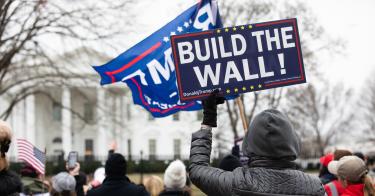As the pile-up of lawsuits proves, many believe that President Donald Trump exceeded his authority by declaring a national emergency at the U.S-Mexico border. The facts and the law show otherwise. He acted only after Congress refused to fulfill its duty to protect the country and provide the resources necessary to secure the border.
Anyone who believes this isn't a genuine crisis is ignoring reality. It approaches what many consider an unchecked invasion: thousands of illegal aliens, dangerous criminals, drug smugglers and sex traffickers crossing the border every day.
The number of apprehensions at the border is down from a peak of more than 1 million annually throughout most of the 1980s, 1990s and 2000s, but it's rising again. 2018 saw the largest number of apprehensions at the border since 2012 -- almost 467,000, according to a Pew Research Center analysis of the most recent data from U.S. Customs and Border Protection. That included 54,000 unaccompanied children and 163,000 family members -- three times as many as in 2017.
The sex traffickers are the modern equivalent of the horrible sea captains of the past who kidnapped Africans and brought them to the U.S. under brutal, murderous conditions that we can't even imagine today. Doctors Without Borders estimates that one of every three women caught in these smuggling rings are sexually assaulted before many are forced into prostitution and slavery here.
The same Mexican cartels that DHS spokesperson Katie Waldman says earn $2.5 billion annually from human smuggling are also responsible for an epidemic of drug abuse and overdoses in our country. They are bringing methamphetamine, heroin, cocaine and fentanyl across the border, according to DHS.
Most drug interceptions occur at ports of entry, but of course, that's where law enforcement is concentrated. How much more is getting through the largely unprotected, unsecured parts of the border?
As for the applicable law, the president has inherent constitutional authority as the chief executive and the commander-in-chief to secure our borders. But he specifically acted under the statutory authority of the National Emergency Act of 1976.
National emergencies are not exactly an uncommon occurrence. Almost 60 have been declared by prior presidents, without any outcry that they were somehow acting illegally. In fact, in passing the NEA, Congress gave itself the ability to end any such declaration by passing a concurrent resolution.
The NEA requires the president to cite the other federal laws under which he is acting. In his proclamation, Trump has cited a federal law on military construction funds that are part of the budget of the Department of Defense. Congress has already appropriated those funds in the amount of $3.6 billion. That statute specifically provides that the president can redirect the use of those funds when he believes it is necessary for the support of the armed forces.
And the president is given broad discretion to make that determination. Here, he has determined that the armed forces are required to assist the Department of Homeland Security and those funds are necessary to build the barriers that will secure the border.
President George W. Bush and President Barack Obama also directed the military to assist the Border Patrol during their administrations. According to the White House, they also both used this same military construction fund 18 different times for projects from 2001 to 2014. None of the states and politicians complaining about this now ever complained before about this.
Moreover, the White House has identified $601 million from the Treasury Department's Forfeiture Fund that it intends to use for border security. Those funds are supposed to be used to help law enforcement. No one can credibly argue that using these funds to help secure the border is not assisting law enforcement.
There is also another $2.5 billion in Defense Department funds that pursuant to another federal statute can specifically be used for "counterdrug activities." Again, no one can rationally argue that securing the border is not a counterdrug activity.
Congress should have acted, but didn't. It gave the president only enough money in the latest government funding bill to build 55 miles of fencing (with many restrictions) along a border that is 2,000 miles long and completely open in many areas.
The president's actions in reaction to that -- and to the crisis at the border -- are certainly not the ideal way this should be dealt with in our constitutional republic. But they are fully within his constitutional authority and the statutory authority provided to him by Congress.
This piece originally appeared in ArcaMax




